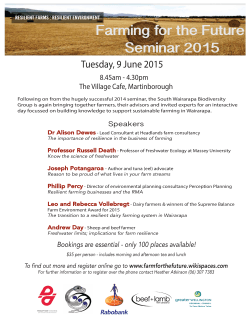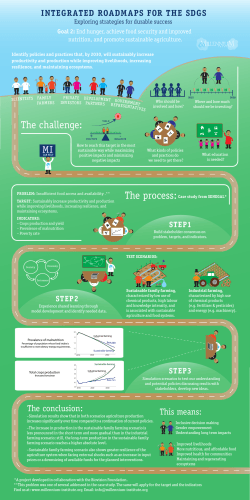
Early Peoples, Neolithic Revolution and Early
1. Early Peoples to Neolithic Revolution Homework Topic 1 Reading Task due 3pm Friday 12 Sep. Paleolithic huntergatherer • • Characterize THREE elements of the lifestyle of the Paleolithic hunter-gatherer group. For each element, explain WHY it probably was that way. Explain the typical beliefs of animists and offer a hypothesis to explain how these beliefs connect with their lifestyle. Present Paleolithic huntergatherer • 99% of human history • Tools = stone, bone, wood • Low pop. Density (1/sq mi) • Nomadic • Extensive leisure time • Rugged existence Hunter-Gatherers • Small nomadic bands, clans, tribes; Follow animal herds for food and seasonal plants Hunter-Gatherers • Culture: animistic, antagonistic to strangers, generally males hunt and females forage, relatively egalitarian society Hunter-Gatherers • rarely surplus food, and since they are nomadic little ability to store any surplus. Thus independent leaders, bureaucrats, or artisans are rarely supported by hunter-gathering societies Hunter-Gatherers • What was the technological status of huntergatherers? o Minimal, usually stone-age tools; limited to what could carry o Everyone in the hunter-gatherer society is master of their technology. Hunter-Gatherers • What limited the population size of hunter-gatherer tribes? o One acre of land that is farmed can support sixty to a hundred more people than one that is left uncultivated o Infanticide; elderly leave the tribe Hunter-Gatherers • Characterize the belief system of hunter-gatherers. o animistic • How did the diet and nutrition of hunter-gatherers differ from early farmers? Hunter-Gatherers • How does the workload of a hunter-gatherer compare to farmers? o About 3 hours a day average – Hunter-gatherers have a lot more free time than we do Hunter-Gatherers • What physical characteristics of humans are best adapted to Paleolithic life? o gene pool has changed little since 35,000 years ago o from a genetic standpoint, current humans are still late Paleolithic preagricultural hunter-gatherers o Strong cravings for salts and fats o Physical differences bt. Males and females o “ADD” Neolithic Revolution 3500 BCE – Sumer 3000 BCE - Egypt Neolithic Revolution • “Neo” = new “lithic” = stone [age] • Revolution = farming • Nothing since this time more revolutionized human life • Shift from H-G to farming was gradual and not uniform around globe • Earliest = “fertile crescent” (modern Iraq) – 8000 BC Neolithic Revolution cont’d • Limitations: plants that could be domesticated, animals available for domestication Neolithic • Fertile Crescent: majority of modern cereals and grains from this stock; more animals here could be domesticated (dogs, pigs, camels, horses) Neolithic • North America: limited plant availability, no large mammals (hunted to extinction by first human immigrants) Neolithic Revolution cont’d • Villages become more permanent as farmers stick by to protect their crops and livestock • Farming » Change belief systems o Regard for animal spirits and lunar cycles replaced by sun worship and concept of after-life • Farming » Technology o Tools (ex. Plow) o Dwellings Neolithic Revolution cont’d • Farmers can support specialized professions because of food surplus: warriors, priests, bureaucrats Neolithic • Farmers develop higher levels of technology: bronze, iron, steel, writing Neolithic • Farming communities develop immunity to diseases caught from livestock with which live (Pizarro captures Incan emperor Atahualpa with small band and smallpox wipes out natives) . Who started it? • Who do you think (and who do you think most Anthropologists think) started farming? o Maybe females, because they were most involved with plants and such? o Could this be connected to the fact the females have been mostly responsible for medicines in history? Mother Goddess • Why do you think the earliest Neolithic myths viewed a mother goddess as superior force? • What celestial bodies do you think are usually associated with the female? The male? NEW Ideas of the Neolithic • • • • • • Ownership, property Warfare Religion Calendars Mathematics Writing Neolithic Revolution • • Explain why farming developed in early river civilizations and how farming leads to civilization. Describe any FOUR elements of the typical early river civilizations. Early Civilizations Compare and contrast any THREE elements (economy, government, beliefs, writing, technology, legal systems, ) of the civilizations Mesopotamia and Egypt. Mesopotamia Map Identification History Begins at Sumer by Samuel Noah Kramer… Rise of Sumer • ~3000 BCE • City-states • Conquered repeatedly • Sumerian culture conquers the conquerors o Spread by them • Who was first, Egypt or Mesopotamia? • Tell Hamukar o New dig o Probably older Uruk Period • 3800-3200 BCE • Creative • Inventions o Wheel o Plough o Metal casting • Weapons, jewelry • Agriculture o 1st orchards • Dates, figs, olives First Writing • Cuneiform • “wedge-shaped” • Gradually literature emerges but at first… o Gov’t records, legal docs, religious • Inefficient system o Blocks of clay o Hard to learn! • Ideographic and phonologic elements o Durable – thousands of these records survive! Uruk Period, cont’d • 3800-3200 BCE • Rise of citystates o Small, independent o Ur, Uruk, Lagash, Eridu • City walls o ~5mi circum. o At first just markers, then defense later period • Buildings = mud brick (no stone local) Building • 1st cities no street plans o Sometimes no streets bt. Houses – walk over roofs to get home! • 1st impressive bldgs = temples o Ziggurats o Priestly class = impt Dynastic Period • ~2800-2350 BCE • Fierce competition bt. Cities grwos • 1st palace complexes are built • Local “lugals” = big shots = first kings • 1st monarchy = “theocratic monarchy” o Gods put king in place & he speaks for them Warfare increases in importance • Simultaneous growth of large landowners and warrior class “warrior aristocracy” • Social tensions evident • Tension: kings/priests – warrior elite Geography • “Middle East is the crucible of conflict and the graveyard of empires” – Dr. Rufus Fears • No natural barriers • 2 rivers • Mountains on edges • Wealth and prosperity of region attractive to stronger peoples outside First Empire • Akkadians o Akkad o north • After 2350 BCE • Sargon I “The Great” o 2371-2316 BCE o Moved south o Interesting life story • Infant in reed basket taken by queen’s attendants in river… Sargon I • When conquered, did not destroy Sumerian culture • Disseminated throughout kingdom • Next come the “Amorites” or “New Babylonians” Amorites • Conquer & spread Sumerian culture • Becomes common basis for life among Semitic peoples in that region • Pretty nasty ppl… Religion of Sumer • Sumerian gods are o Immortal o Have superhuman powers o Otherwise like humans • Religious rights = appease gods • Religion = pessimistic/fatalistic o Unpredictable river o Constant conquests • Polytheistic • Synchretistic • Gods o Of Sky • Male, war, gov’t, forces in nature o Of earth • Female, fertility, abundance, wealth, fotune o animistic Religion, cont’d • No ethical function • First attempt to understand / systematize natural forces Beliefs • Polytheistic o o o o o An – sky Enlil - storms Marduk Tiamat Enki • After-life • Deal-making Legal Legacy of Sumer • Sumerian law = no philosophical underpinning (like our Constitution) • List of rules and punishments (fines, capital, sometimes cruel) • Social struggles evident here • Carved in stone = public = means it’s for everyone Hammurabi’s Law Code • Contrast the Code of Hammurabi to the American concept of justice. • Code of Hammurabi o C. 1790 BCE o Babylon Government • "temple-communities" – a class of priestbureaucrats controlling the political and economical life of the city in the name of the city gods • Priest-king • City-state o Ur o Uruk o Eridu • Ziggurat • Sacrifice • God/goddess Economy • Agriculture o surrounding land of each citystate - individual tracts, irrigated w/ system of canals and dams. o wheat and barley • Trade o transportation of textiles and crops by Sumerian merchants to other lands, o exchanged for stone, metals, and timber. o traded to other Sumerians or used to fabricate jewelry, tools, and weapons to be traded later. Technology • Water control methods o o o o Sluice Dam Canal Irrigation • Mathematics (60based) • Calendar • Chariot • Wheel – potter’s wheel (mass production) • Bronze!! • plow
© Copyright 2025











